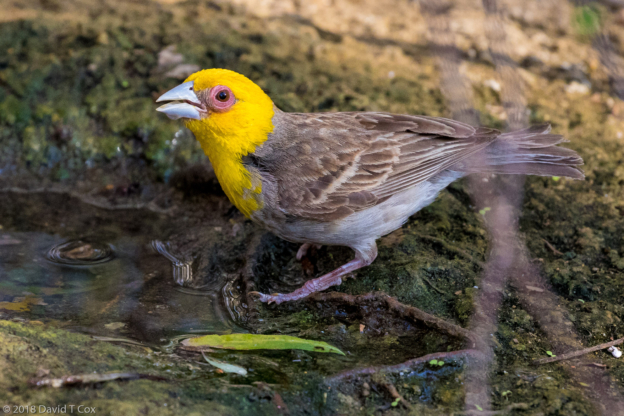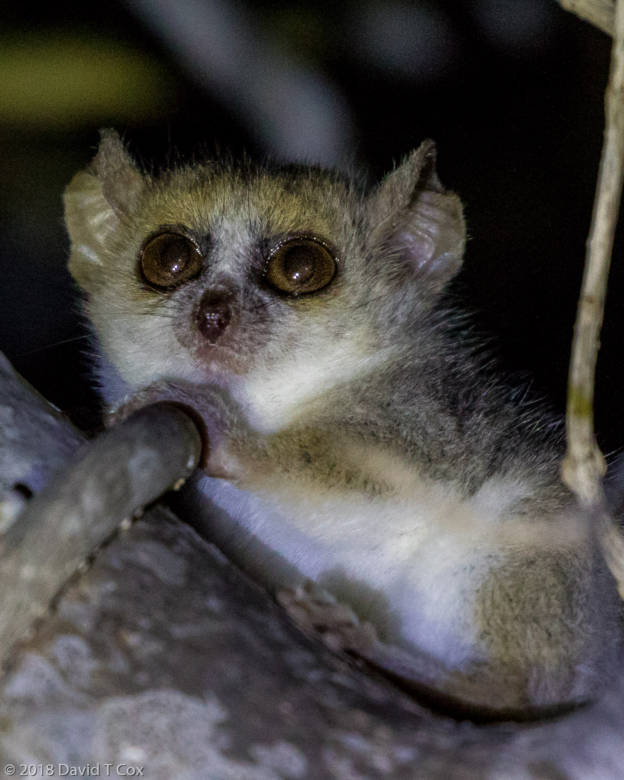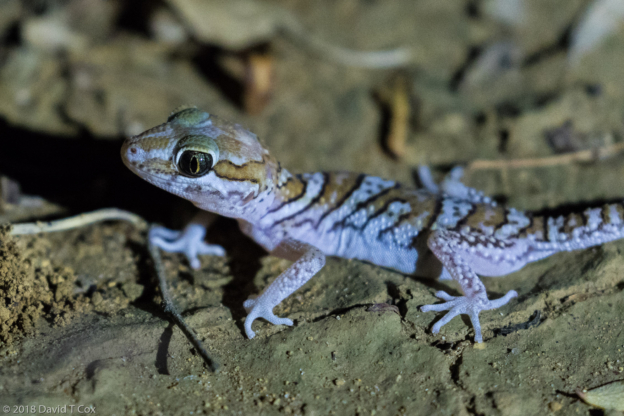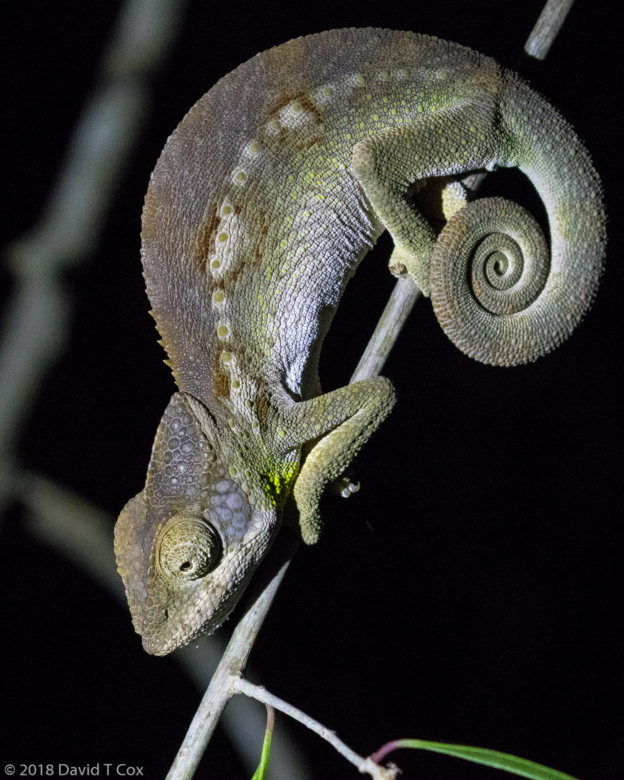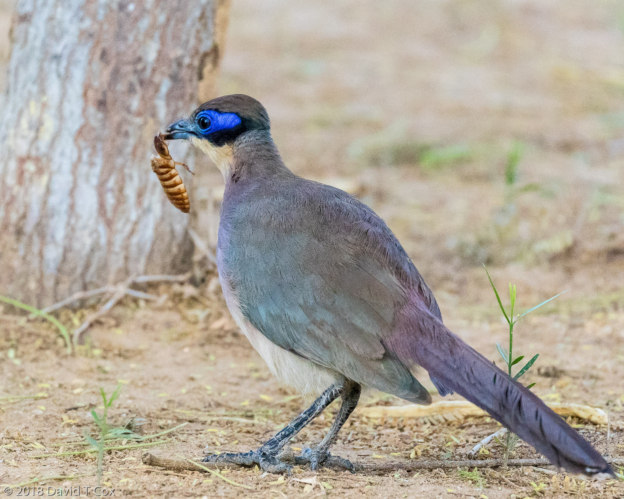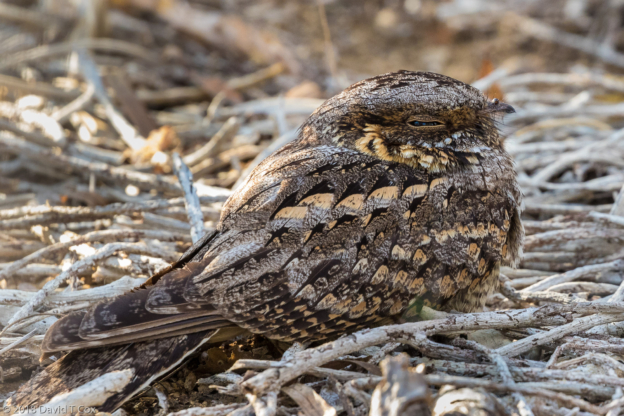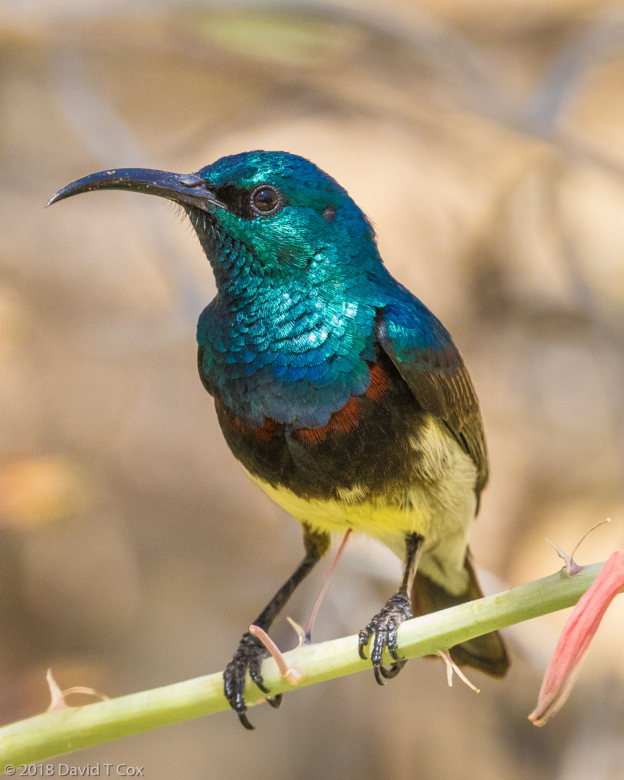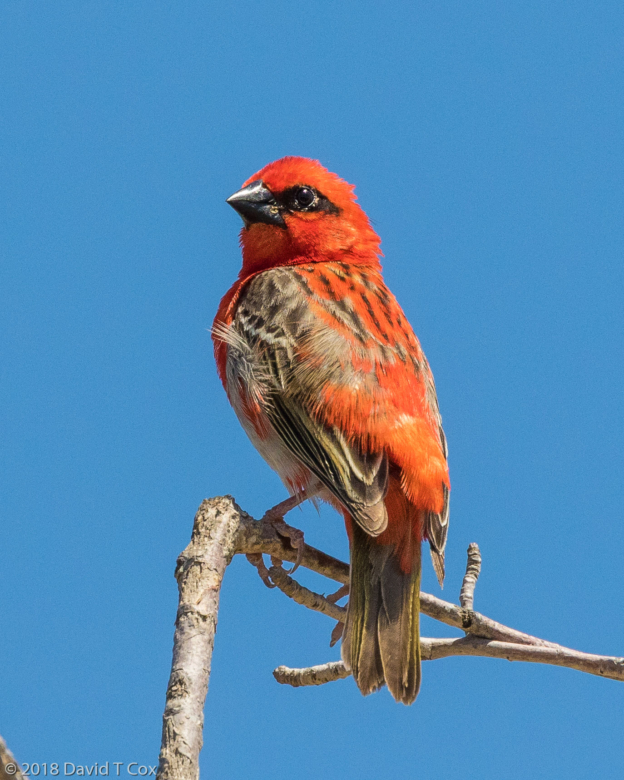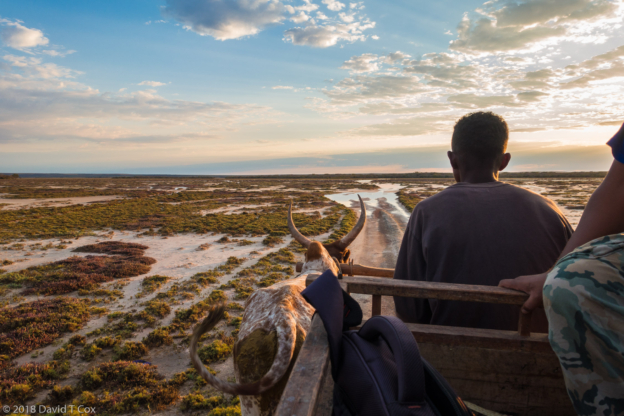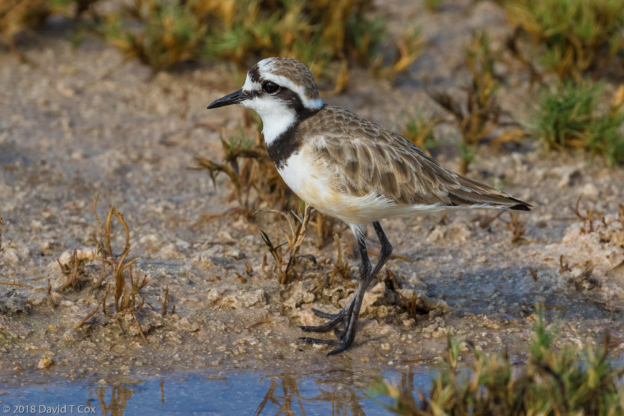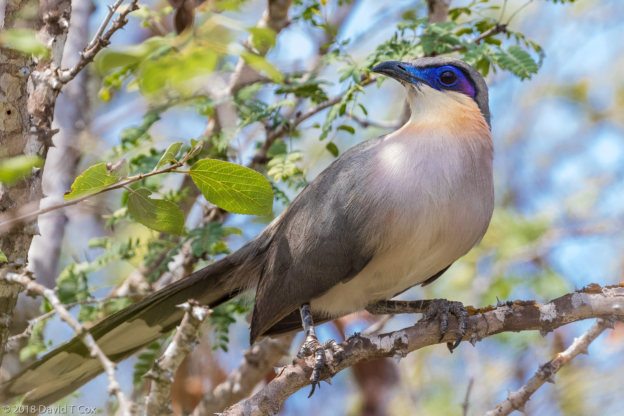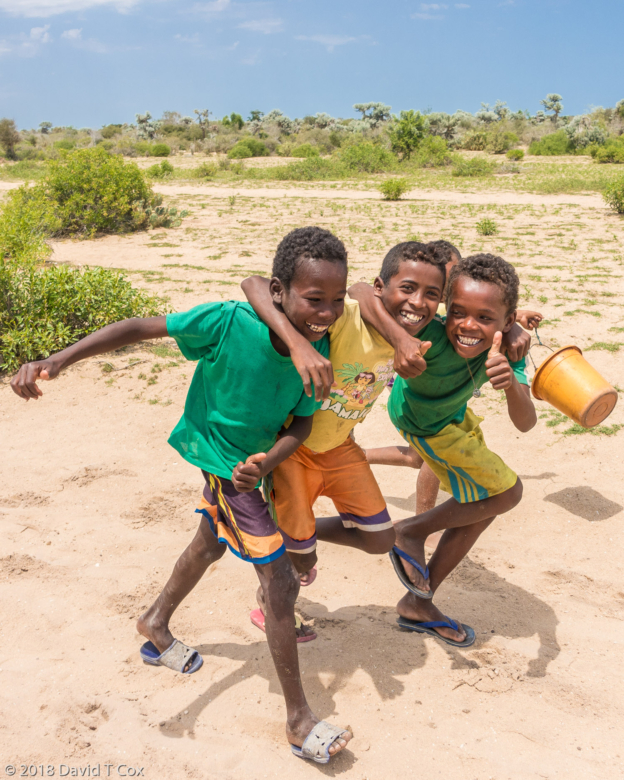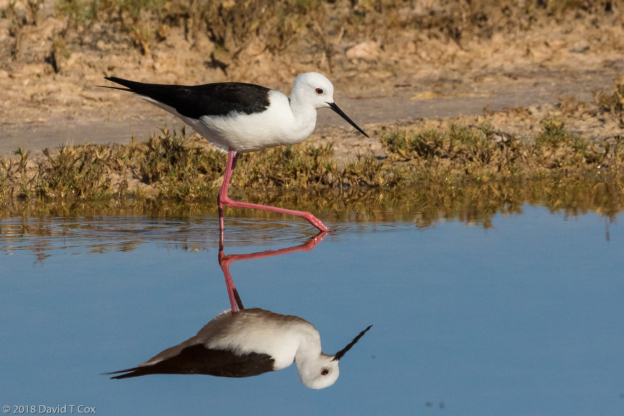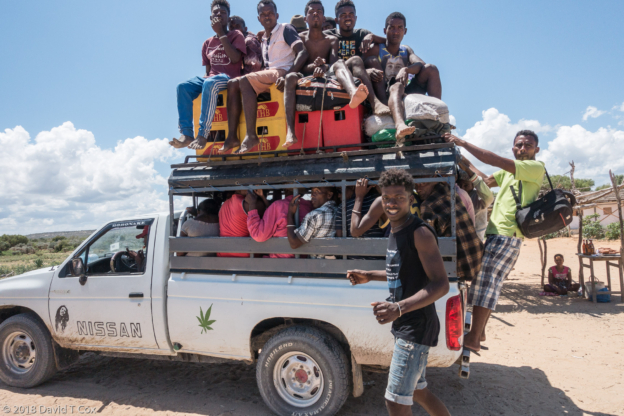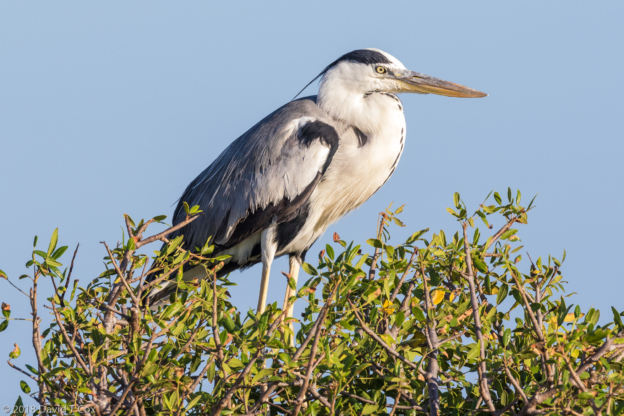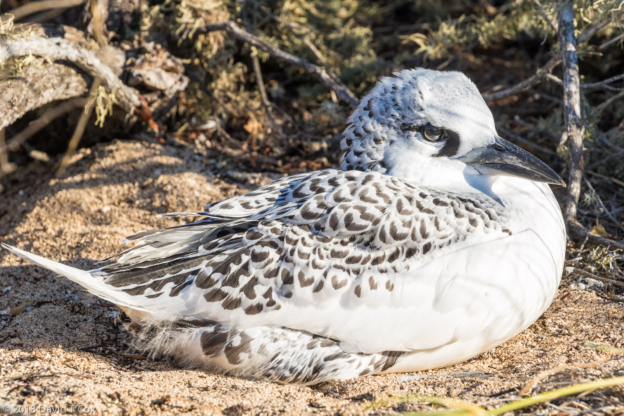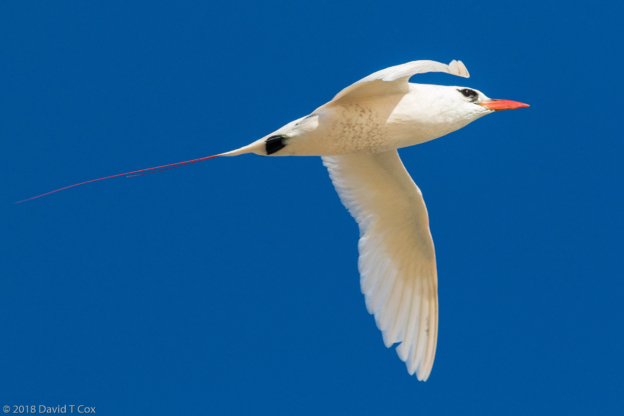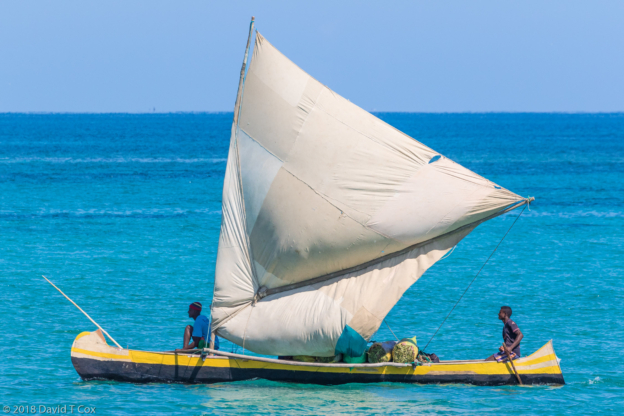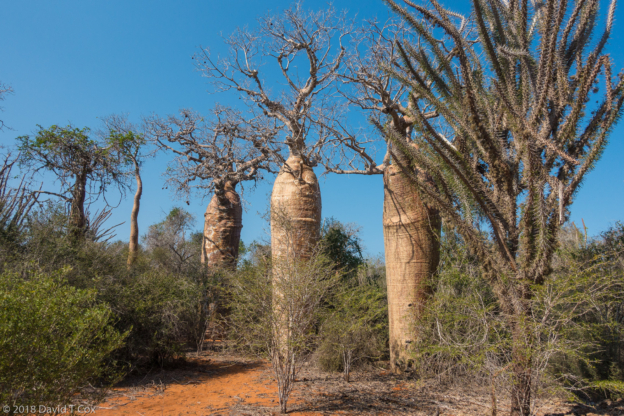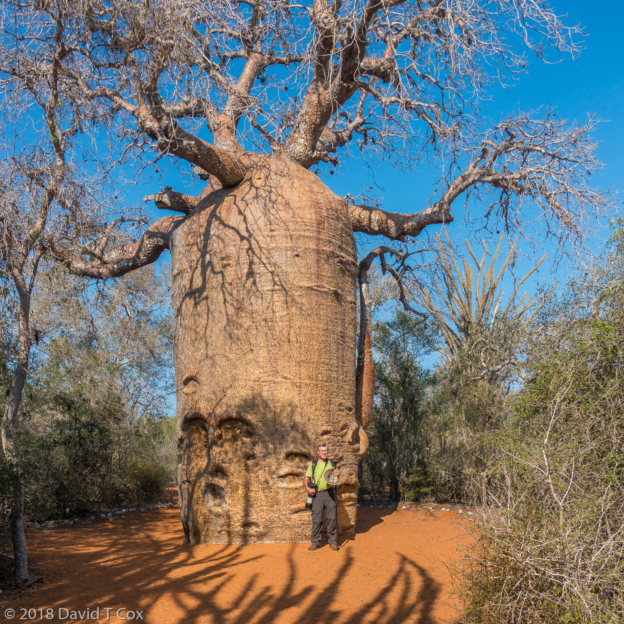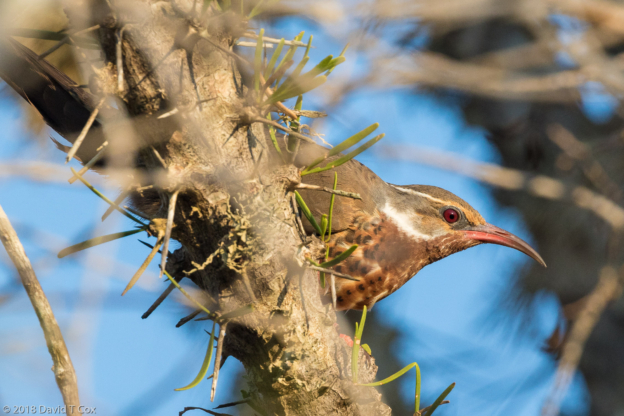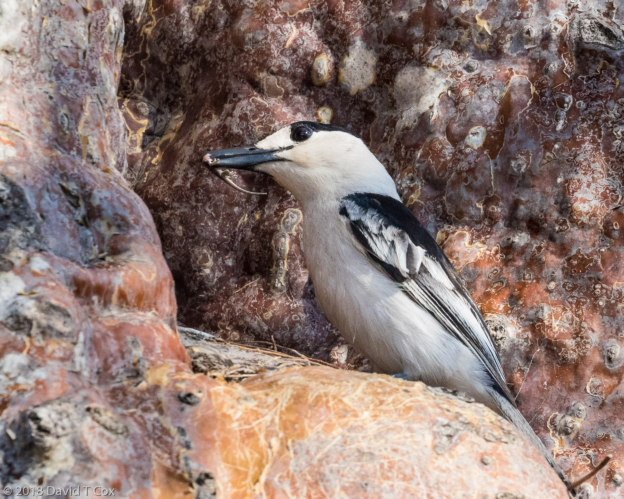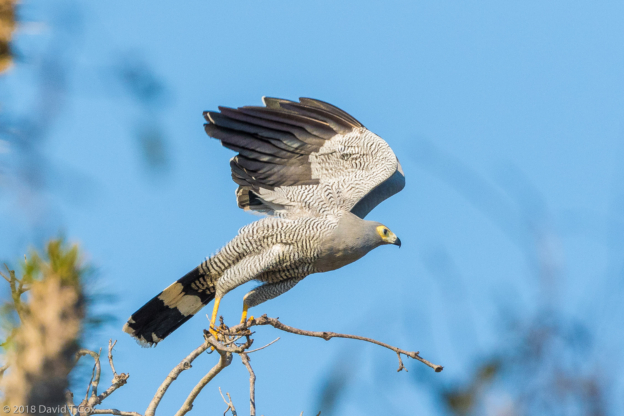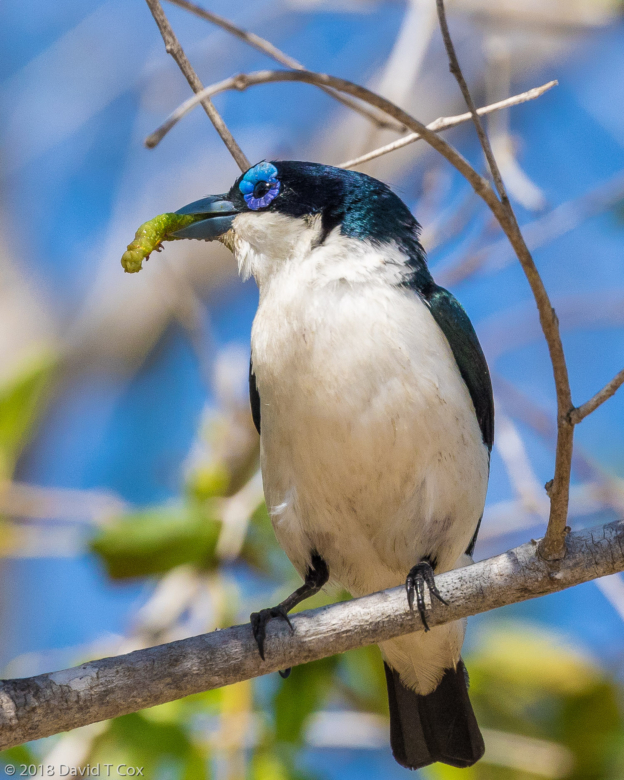All Photos Are Below the Travelogue Text
Click on Any Photo To Open Slide Show
To print the travelogue, right click anywhere on the page. Choose "Print" from your browser dialog box. You can choose Save to PDF in the browser print window.
Share your thoughts.
Email Dave - coxdavid55@hotmail.com
One very full day was passed at the lovely bungalow in the Arboretum, outside Toleara, where an amateur Swiss botanist collected and planted almost 1,000 species of exotic plants from southwestern Madagascar. With dripping water faucets, and surrounded by native dry forest, the site is excellent for birding as well as night walks. At night we encountered the nocturnal Rufous-grey Mouse Lemurs, about the size of chipmunks, which scamper among the trees in search of insects on which they feed. These lemurs are the tiniest primates on earth. They didn’t like my flashlight, shutting their eyes when I used it to acquire photos, but the flashlight was much kinder on their eyes than the camera flash some people use, and I can manage some very low light photography if close enough. Also encountered at night, a very tiny Lesser Hedgehog Tenrec (Telfairi), ensconced inside a tiny ¾ inch crack in a tree trunk – when the guide stuck a small twig inside, the hedgehog bit it viciously – I did not stick my finger inside. Common on low twigs were the Madagascar Hissing Cockroaches – my driver and guide laughed when I said some kids kept them for pets; they said in Madagascar they are squashed when encountered. Finally, we discovered the most exquisite Warty Chameleon on a small tree branch – a must-see photo.
During the early morning I got good shots of the Green-capped Coua devouring a Madagascar Hissing Cockroach, as well as a pair of nesting Madagascar Kestrels, a gorgeous Male Souimanga Sunbird and a flame colored Madagascar Red Fody. We moved on into Toleara, second largest city in Madagscar, to a first class hotel for the evening. The following day we took a boat south about 35kms across the St. Augustine Bay. The boat ride was most unusual in that no deep inlets or port exist on the coast. Therefore, even the flat bottomed boats such as we took cannot get right onto the beach but must be out in a few feet of water. To load onto the boat a series of bullock carts are driven by young boys onto the beach to collect the luggage and passengers, then head out into the shallow waters by the side of the boat to off load the cart. At the arrival points in Anakao to the south, groups of young men wade out to gather the luggage onto their backs to carry from the boat to shore; passengers must do a “wet” landing, simply wading to shore (lots of sand in the sandals, which hopefully one has been advised to wear).
In Anakao we were met by a driver with 4X4 to continue our transport south along the dirt and sand single track another 45kms through very unusual dry scrub, into territory with no paved roads. My accommodation, at the Le Domaine d’Ambola, is the home and guest house of the regional head of the ABC Domino, a French NGO which has built schools around the southwest coast for the villagers who live in the middle-of-nowhere (see the photo of the 4X4 “bus” below). We were on a beautiful white sand beach coastline, had running water turned on for parts of the day, took bucket baths in the bathrooms, and relied on rather dependable solar power which periodically was turned on for the rooms. The first late afternoon after arrival a booming thunderstorm and downpour passed over us, flooding much of the property, and was pronounced most unusual by the owner. It cleared quickly and that evening the sunset was beautiful. This was the only spot within easy 4X4 access of the Tsimanampetsotsa National Park, my reason for coming. The Park consists of marshes and a shallow soda lake full of unusual water birds with the surrounding dry spiny forest full of a different set of birds. Barely 1,000 tourists a year visit the Park as it is rather difficult to get to.
Because of the very heavy thunderstorm of the first day the difficulty level increased the next 2 days; even the 4X4 could not reach the Park, so alternate transport by bullock cart was arranged for the 6 kilometers passage through shallow standing water in the briny pans to reach the main lake and Park areas. The previous day I had sought out the only guide with knowledge of the birds and arranged for him to accompany me for the 2 days. At the Lake edge we encountered three species of small plovers, the White-fronted, Kittlitz’s and rather rare Madagascar, as well as Greater Flamingos, and two more species of Coua, the Running and Verreaux’s.
The second day by bullock cart, in order to get deep into the Park on the far side of the lake, we crossed a number of deep water depressions, and twice got stuck, once with one of the bullocks tail down into a deep hole. Both times required the driver to release the bullocks to extricate themselves, while my driver, guide and cartman then man-handled the cart wheels to extract the cart from the muddy depression. You may have read that cattle contribute very significantly to global warming by emitting greenhouse gasses consisting of methane, CO2 and nitrous oxide, which together are worse than all auto emissions combined, as the methane is over 20 times more heat-trapping. The two bullocks pulling my cart had achieved superstar status in this regard. Needing to sit down in the cart, to avoid falling out, I was low enough to endure some really noxious emissions – effused heavily with aerosol particulates and vapors that only bullock bacteria apparently can produce – odiferous is way too polite a term.
For those who may think this travel sounds rough, well it is, in fact, adventure travel. All the better hotels in this area have no running water. At the Safari Vezo, in Anakao, they daily brought me a small bucket of very hot water, dark brown and briny, into which some palm leaf had been steeped to a tea strength, which bathing solution was reputed to have many medicinal qualities to heal one’s aches. The bath was taken sitting in the nicely tiled bath chamber, with huge plastic buckets of briny water from which one poured a mixture of the hot and cold via a large plastic cup. Electricity all was via solar power, and generally was supplied to the rooms for only a few hours in early evening. Getting up daily at 4am, I was reliant on flashlights to get around. All battery recharging, in order to get my computer work accomplished, had to be undertaken within a 4 hour window. For coffee in the early morning hours, I often relied on borrowing a thermos filled with hot water in the evening, with which I then could make instant coffee in the morning. Mosquitoes were not so bad this time of year around most of the rooms, though DEET or nets are advised. Mosquitoes could be horrid in the Parks, as was the mid-day sun.
My one full day in Anakao, I hired an outrigger (with tiny motor) to visit the nearby island of Nosy Ve. Most tourists go, if at all, for the completely deserted white sand beaches. I went because it has the southern-most breeding colony of Red-tailed Tropicbirds. One finds the scattered nests under brush, inland a distance from the beaches – somewhat reminiscent of the many nesting birds in the Galapagos. We also encountered a number of shorebirds, Grey heron and Newtonias on the island.
On Monday we returned by boat across the Bay to Toleara, and after stocking up on a few supplies, traveled north to the small village of Ifaty on the coast, surrounded by more spiny desert and some rare endemic birds. The next day I spent 5 hours in the private Reniala Reserve, with a young university educated guide, and was rewarded with great photos of two rare local endemics; the Subdesert Mesite and the Long-tailed Ground Roller. Both are found only in a roughly 10 by 35 kilometer stretch of coastal thorny forest centered on Ifaty – nowhere else on earth. Both provided very nice colorful photos, presented below. We also were fortunate in locating two somewhat rarely seen birds at their nests; the Madagascar Harrier Hawk, a very large magnificent bird of prey, and the Hook-billed Vanga, which was presenting its young a headless lizard at its nesting hole in a Baobab tree. Incidentally, this reserve provides protection to a number of amazing Baobabs, some 1,200 years old (see photo of yours truly), plus the fantastic Octopus tree, a towering collection of very spiny leafy poles reaching into the sky. The vegetation in the spiny southern forests is some of the most exotic on earth – I never have seen so many really strange dry forest type plants – and most indeed are spiny.
The following day I arranged a different guide to visit some shallow soda lakes south of Ifaty, where we photographed more plovers, as well as a bedraggled looking Madagascar Swamp Warbler (I pictured it just to show the meaning of “bedraggled”), and a Baillon’s Crake, very difficult to see as it never leaves the thick reeds. We return by vehicle to the Capital Tana over the next two days – each will require 11 to 12 hours of driving. I will then spend 5 days back in the Eastern rain forest to try to pick up a number of final endemic birds and lemurs. Later. Dave
- Reddish-grey Mouse Lemur (aka Rufous), Arboretum, Toleara, Madagascar
- Big-headed Gecko, Arboretum, Toleara, Madagascar
- Warty Chamellion, Arboretum, Toleara, Madagascar
- Madagascar Hissing Cockroach, Arboretum, Toleara, Madagascar
- Green-capped Coua w Madagascar Hissing Cockroach, Arboletum, Toleara, Madagascar
- Madagascar Nightjar, Arboletum, Toleara, Madagascar
- Sakalava Weaver, Arboletum, Toleara, Madagascar
- Madagascar Kestrel, Arboletum, Toleara, Madagascar
- Souimanga Sunbird, Arboletum, Toleara, Madagascar
- Madagascar Red Fody, Arboletum, Toleara, Madagascar
- my oxcart crossing flooded pan to Tsimanampetsotsa NP, Madagascar
- Greater Flamengo, Tsimanampetsotsa NP, Madagascar
- Madagascar Plover, Tsimanampetsotsa NP, Madagascar
- Running Coua, Tsimanampetsotsa NP, Madagascar
- boys chasing our bullock cart, Tsimanampetsotsa NP, Madagascar
- Black-winged Stilt, Tsimanampetsotsa NP, Madagascar
- Madagascar Cuckoo, Tsimanampetsotsa NP, Madagascar
- travel by 4X4 bus Ambola to Anakao, Tsimanampetsotsa NP, Madagascar
- Grey Heron, Nosy Ve, Anakao, Madagascar
- Red-tailed Tropicbird new hatchling, Nosy Ve, Anakao, Madagascar
- Red-tailed Tropicbird fledgling, Nosy Ve, Anakao, Madagascar
- Red-tailed Tropicbird, Nosy Ve, Anakao, Madagascar
- outrigger from Hotel Safari Vezo beach, Anakao, Madagascar
- Baobab and Octopus Trees, Reniala Reserve, Ifaty, Madagascar
- Dave before 1,200 year old Baobab, Reniala Reserve, Ifaty, Madagascar
- Subdesert Mesite, Reniala Reserve, Ifaty, Madagascar
- Long-tailed Ground-Roller, Reniala Reserve, Ifaty, Madagascar
- Hook-billed Vanga at nest in Baobab with lizard body, Reniala Reserve, Ifaty, Madagascar
- Madagascar Harrier-Hawk, Reniala Reserve, Ifaty, Madagascar
- Madagascar Swamp Warbler, small lakes S of Ifaty, Madagascar
- Chabert’s Vanga with caterpiller, Nautilus, Ifaty, Madagascar
To print the travelogue, right click anywhere on the page. Choose "Print" from your browser dialog box. You can choose Save to PDF in the browser print window.
Share your thoughts.
Email Dave - coxdavid55@hotmail.com
